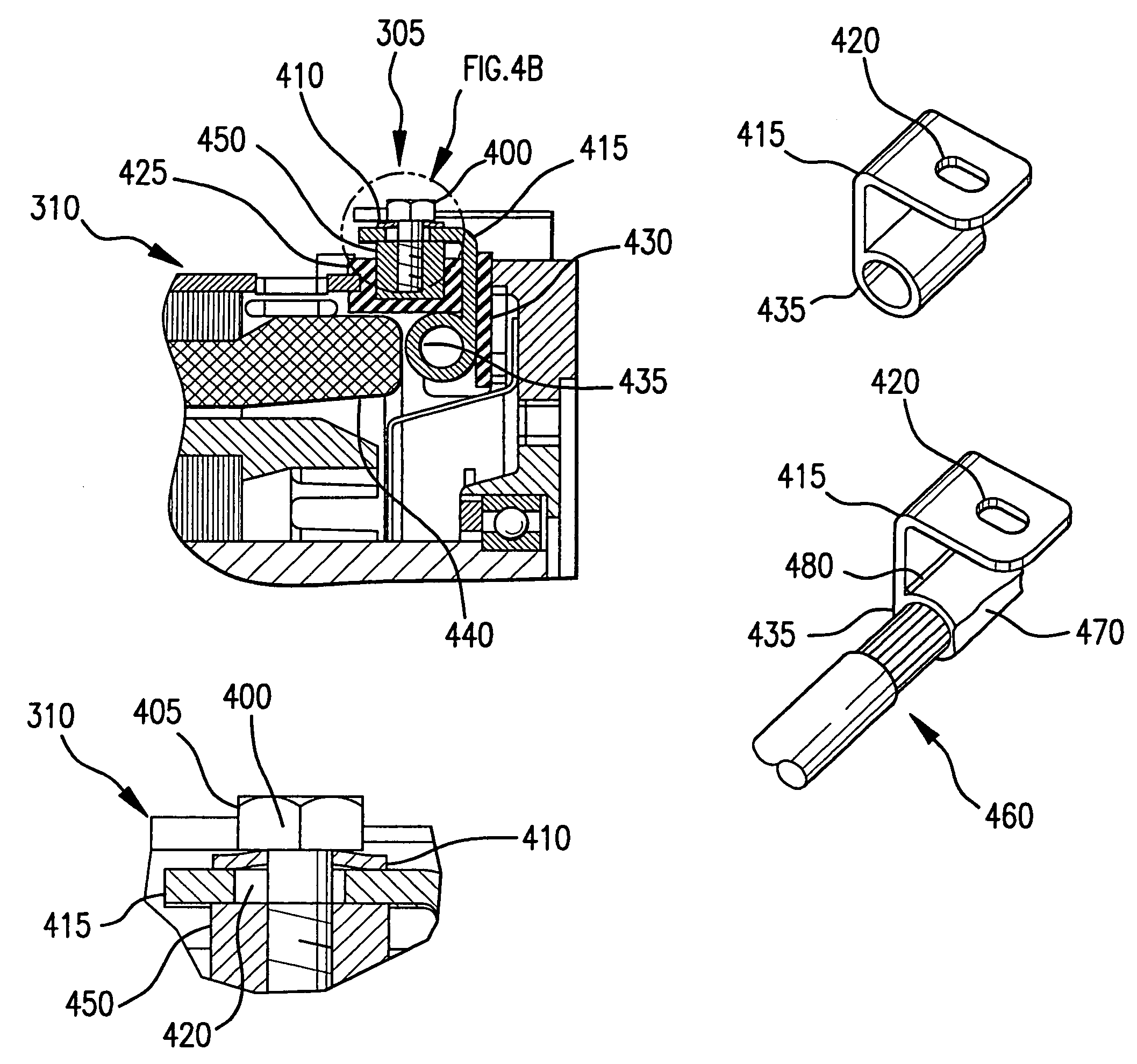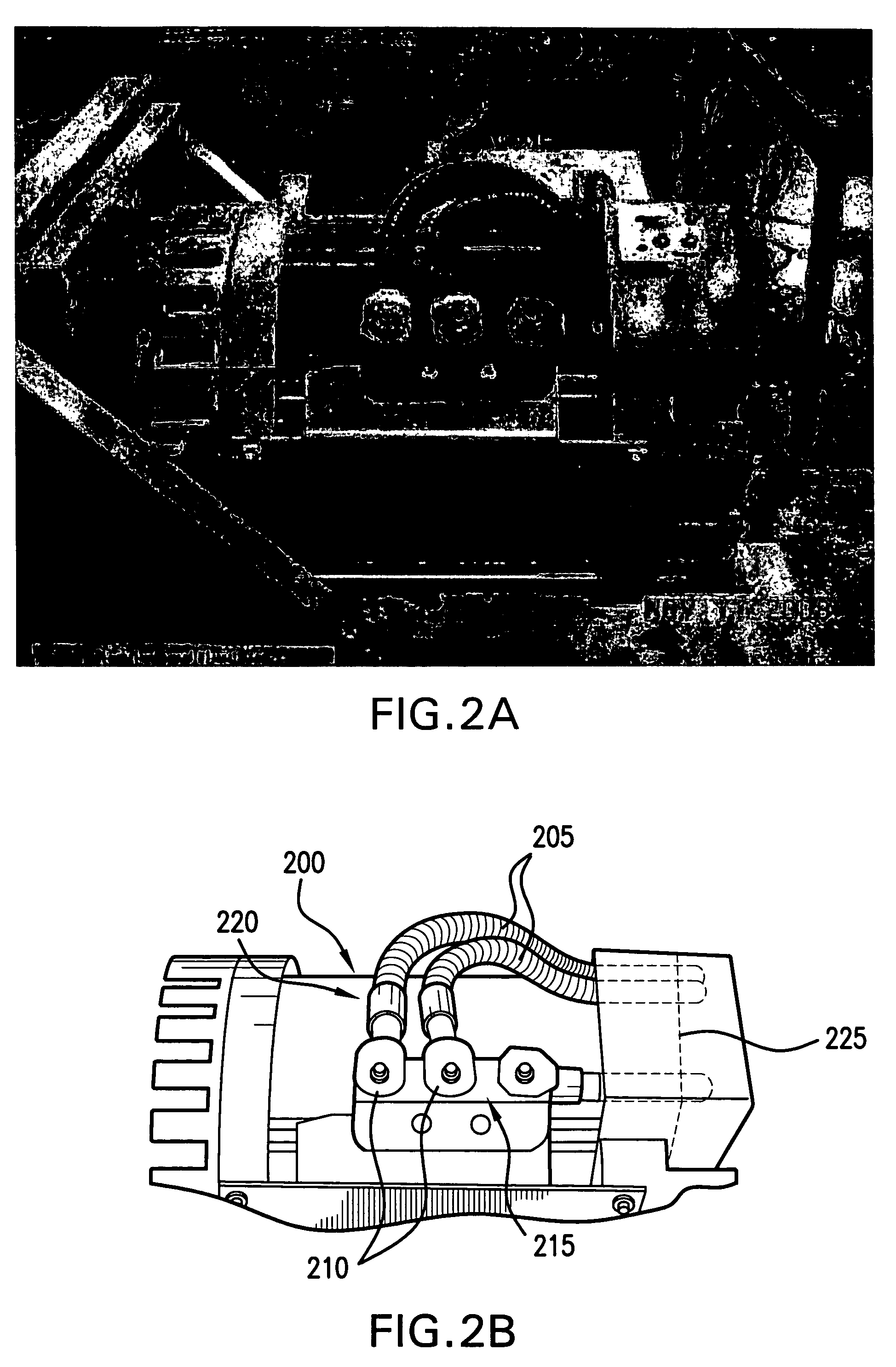Low voltage electronic motor wire termination
a low-voltage electronic and motor technology, applied in the direction of electric cable installation, dynamo-electric components, supports/encloses/casings, etc., can solve the problems of dc motor elements that require additional maintenance, brush and commutator wear that requires disassembly of the machine, and people working around the motor are exposed to a significant risk of electric shock, so as to achieve simple and robust
- Summary
- Abstract
- Description
- Claims
- Application Information
AI Technical Summary
Benefits of technology
Problems solved by technology
Method used
Image
Examples
Embodiment Construction
[0026]The invention provides a greater degree of flexibility for AC motor connection terminal designs, as well as addressing a variety of safety concerns related to conventional AC motor connection terminal designs. Previously, AC motor drive current was supplied to a conventional AC motor through power cables connected to an exterior AC connection terminal block (illustrated in FIGS. 2A and 2B). The connection terminal block facilitated an external connection with lead wires that run externally from the connection terminal block to an end of the AC motor. The lead wires entered the AC motor through an aperture in the center of an end bell of the motor and were connected directly to the respective AC phase coils.
[0027]In contrast to the conventional AC motor, the invention as illustrated in FIGS. 3A and 3B, provides a simple, low profile, robust means of terminating AC phase coil windings. The lead wire connections are made internal to the motor housing.
[0028]FIG. 3A is a black and ...
PUM
 Login to View More
Login to View More Abstract
Description
Claims
Application Information
 Login to View More
Login to View More - R&D
- Intellectual Property
- Life Sciences
- Materials
- Tech Scout
- Unparalleled Data Quality
- Higher Quality Content
- 60% Fewer Hallucinations
Browse by: Latest US Patents, China's latest patents, Technical Efficacy Thesaurus, Application Domain, Technology Topic, Popular Technical Reports.
© 2025 PatSnap. All rights reserved.Legal|Privacy policy|Modern Slavery Act Transparency Statement|Sitemap|About US| Contact US: help@patsnap.com



